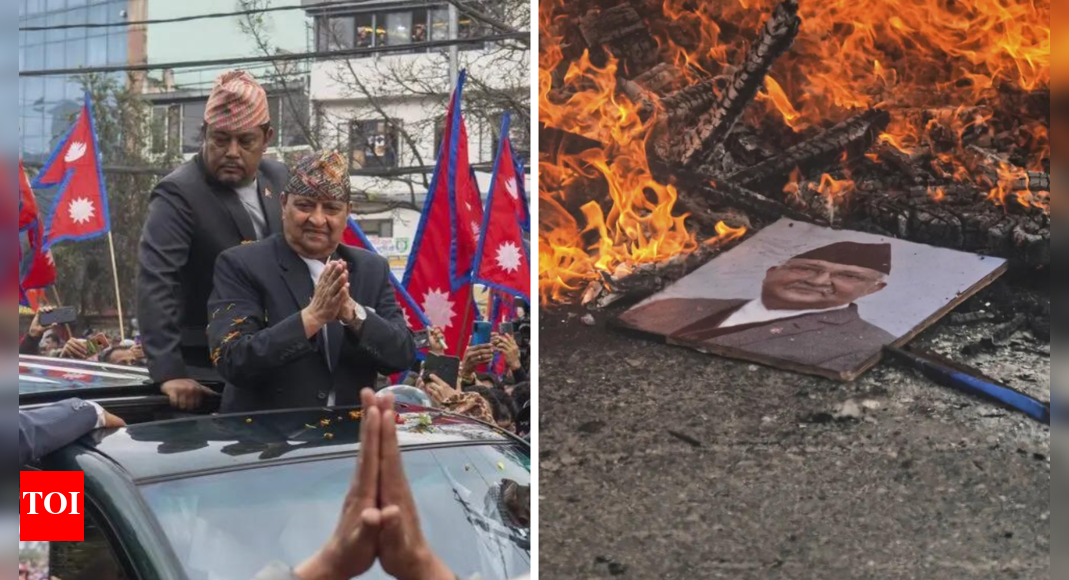Nepal Top Minister KP Sharma Oli on Tuesday gave in to in style Gen Z protests towards the federal government’s choice to prohibit a number of social media platforms.After the federal government rolled again its order and lifted the bans, the demonstrations shifted focal point on the second one day, proceeding with renewed momentum—this time focused on the federal government’s in style corruption.Now, all eyes are on who will prevail Oli and take over the federal government.Apparently, the Gen Z protests come simply months after the Rashtriya Prajatantra Celebration, along side pro-royalists, Hindu nationalists, and anti-federalists, held large “pro-monarchy” demonstrations in Kathmandu.Tens of 1000’s of protesters had taken to the streets, challenging the recovery of the abolished monarchy and the reinstatement of the previous king as head of state.The protestors often known as for the revival of Hinduism as Nepal’s state faith.“Raja aaunparcha” (The king should go back), they chanted.This groundswell of enhance comes amid deep frustration over Nepal’s post-monarchy duration, which has been marked by means of instability. Since King Gyanendra stepped down, the rustic has witnessed greater than a dozen regime adjustments.
The Prophecy
On the other hand, the frenzy to revive the monarchy faces bold obstacles rooted in a centuries-old prophecy attributed to Guru Gorakhnath.In keeping with Hindu trust, Gorakhnath, appearing as a divine messenger, blessed Prithvi Narayan Shah—the 18th-century unifier of Nepal—with a monarchy destined to remaining for 11 generations.Royalist supporters broadly include this prophecy, believing it reached its conclusion with King Dipendra Shah. Dipendra in short ascended the throne whilst in a coma following the 2001 royal bloodbath—a tragedy that marked the monarchy’s fast decline.His quick reign was once observed because the fulfilment of Gorakhnath’s blessing, and the eventual abolition of the Shah dynasty in 2008 was once interpreted because the prophecy coming to cross.When Nepal’s constituent meeting officially ended the monarchy, many believers noticed it no longer as a historic twist of fate however as a part of a cosmic plan.In 2008, the flag of Nepal’s 240-year-old Shah dynasty was once decreased from the primary palace in Kathmandu after the sector’s remaining Hindu monarchy was once abolished, two years after mass side road protests pressured Gyanendra to step down from absolute rule.Nepal then turned into a federal democratic republic, however since that transition, many voters have grown annoyed with power political instability and aggravating financial prerequisites.In spite of the rising enhance for a royal revival, Gyanendra has remained silent at the renewed requires his go back. Political analysts imagine his probabilities of reclaiming the throne stay slender. The republic is constitutionally enshrined, and mainstream political events proceed to strongly oppose reinstating the monarchy.Gyanendra, who first ascended the throne in 2002 after the tragic bloodbath of his brother King Birendra and his circle of relatives, to begin with served as a constitutional monarch. On the other hand, in 2005, he seized absolute energy—dissolving the federal government and parliament, jailing politicians and newshounds, and enforcing emergency rule.His authoritarian transfer sparked mass protests that in the long run ended in the monarchy’s downfall and the established order of a republic.

